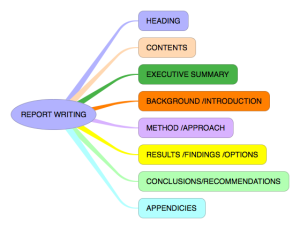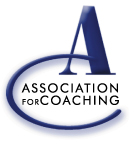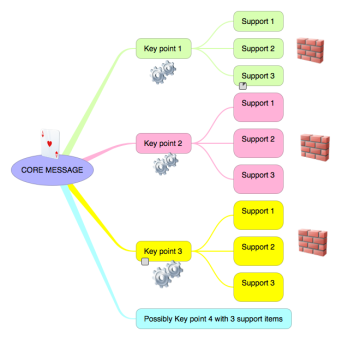REPORT WRITING is an important skill for change and general management:
GREAT BOOKS ON REPORT and BUSINESS WRITING
BASICS
Your report needs a good Format and structure – it should include most of the following categories:
- Heading Page
- Content List
- Executive Summary
- Background / Introduction
- Methods
- Results
- Observations /Proposals/Options
- Conclusions and Appendices
- An Executive summaryis a real ‘must’ if your report is a really lengthy one
- An executive summary provides bullet points of all of the main elements of your report
- It gives the ‘reader’ a snapshot view of the contents
- It ensures that your main points are emphasised
- And it conveys a really professional image!
- An executive summary is easy to create once you have written the complete report
- The Background or Introduction section should set the scene for the reader
- It should explain why the information in the report has been put together
- It should details any problems that have been identified and the effect of any such problems on the content of your report
The METHODS section of your report should explain HOW the information has been gathered
- What were the sources of information?
- What format did any investigation take?
- Was any special documentation used to gather information?
The RESULTS section should detail the results of the exercise – the facts. These can be presented in text or tabulation format, depending on the content
- If the results are quite short they can be presented within the body of the report
- Remember that charts, diagrams or graphs can be exported from Excel or PowerPoint and embedded into the body of the report
- If, however , the results are lengthy consider if they would be better placed as an Appendix
Observations or Findings
- Observations: Sometimes presenting factual results is simply not enough
- There might be other influences that should be mentioned
- You might wish to make your own comments on the subject of the report
- Observations are not fact-based and therefore cannot be substantiated
- Observations are your views!
FINDINGS: a findings approach uses substantiated evidence to propose an option or a range of options
The RECOMMENDATION section allows you to make recommendations based on the findings of your report
- The recommendations could , for example ,be for:
- Change
- Improvement
- New Ideas /designs
- New markets
- Investment
- Etc
The recommendations should be based on the findings / results detailed in the report
| Conclusions describe
How the implementation of your ideas and
|
| Numbering Report Sections
· Expect feedback on your report – this could come in writing or verbally · Make it easy for the ‘reader’ to feedback by numbering important sections of your report · Not only can you number each section but also every paragraph in a section Appendicies
Impact · A report is compiled of many different elements · Always keep in mind the Impact of your report on the Reader · The Impact of your report will be dictated by the ‘look’ – so think about it carefully · The ‘look’ can help you create a positive image of the writer – YOU! GREAT BOOKS ON REPORT and BUSINESS WRITING Peter Cobbe coaching
Just a thought : Five frogs are sitting on a log. Answer: five. Why? Because there’s a difference between deciding and doing. Mark Feldman For a free exploratory discussion on 1 to 1 or Group Session coaching contact me on: cobbep@gmail.com |






